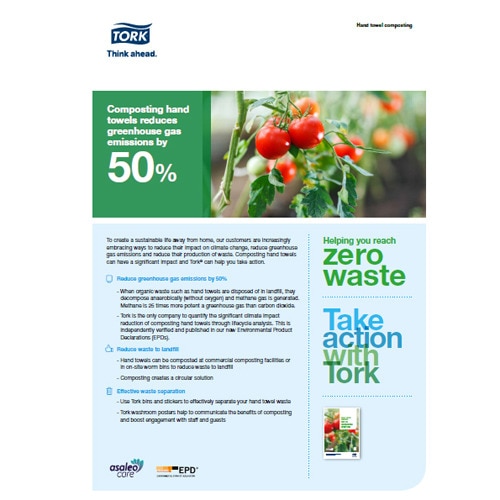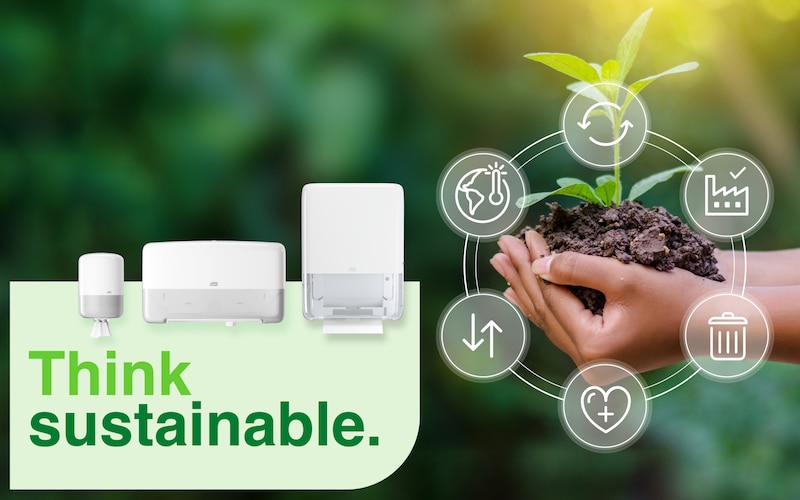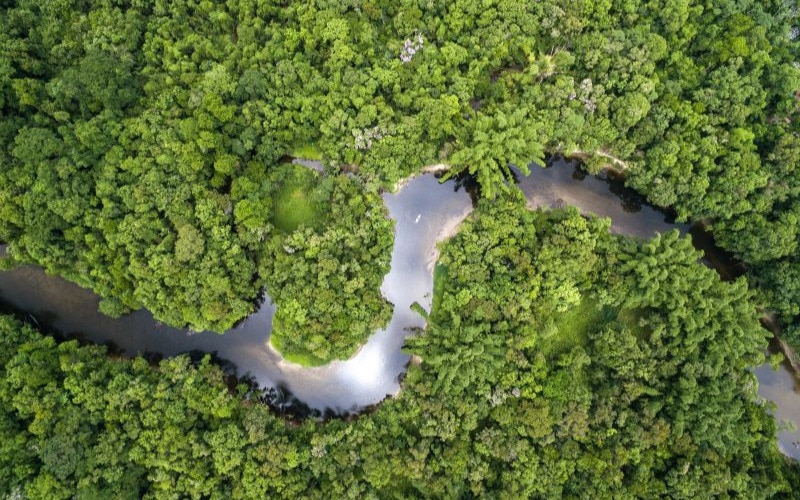
Use & waste
As societies slowly transform from linear to circular, new business models will require responsible use of resources through a mindset of design, reduce, reuse and recycle. There is not an infinite amount of raw materials in the world, nor infinite space for disposal of materials in landfill. In a circular economy, waste is prevented. Firstly by making products and materials more efficiently, then reusing or recycling them, instead of disposing of them.

Use less
First and foremost, by reducing use, we also reduce waste. Tork systems are designed to use less and reduce waste - some such as Tork SmartOne by up to 40%.1 One-at-a-time dispensing also lowers consumption as demonstrated by Tork Xpressnap which is guaranteed to reduce napkin consumption by 25%.2

Recycling
Tork is changing its plastic packaging to be produced with at least 30% recycled plastic. By incorporating more recycled plastic, Tork is reducing plastic in landfill and creating circular solutions.

Composting
When organic waste such as hand towels, napkins and paper wipers are disposed of in landfill, they decompose anaerobically (without oxygen) and methane gas is generated. Methane is 28 times more potent a greenhouse gas than carbon dioxide. Instead, these tissue products can be composted and life cycle analysis shows that commercial composting can reduce greenhouse gas emissions by up to 56%. 3 Tork is the only company to quantify the significant climate impact reduction of composting tissue products through life cycle analysis. This is independently verified and published in our new Environmental Product Declarations (EPDs).
You may also be interested in
1Internal research on SmartOne system with 7,729 users in Europe.
2Compared to traditional napkin dispensers.
3Environmental Production Declaration (EPD) Tork Hand Towels S-P-00851 and Toilet Paper S-P-00852.




